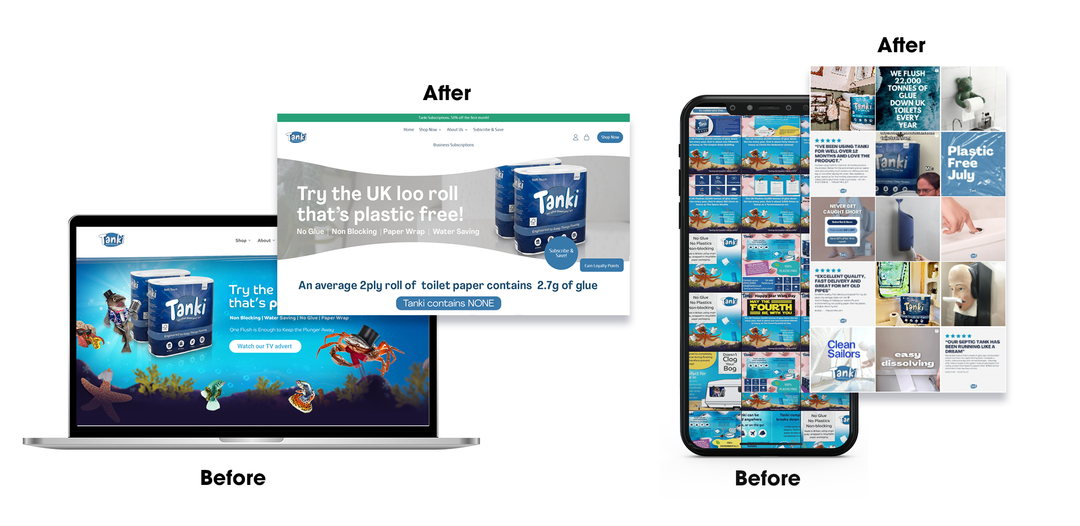Master E-Commerce Website Design: 2024's Best Strategies for Success

The importance of a well-designed e-commerce website cannot be underestimated in today's digital age. With more businesses entering the online market, capturing the attention of potential customers has become increasingly challenging. Your website serves as the first impression of your brand and plays a significant role in determining its success. As we progress in 2024, trends in e-commerce website designs are constantly changing, and it's crucial to stay updated with the latest strategies that can help you drive sales and generate solid ROI.
Effective e-commerce website design is more than just creating a visually pleasing layout. It involves striking the perfect balance between aesthetics and functionality that caters to your customer's needs while showcasing your products and services in the best light. A successful e-commerce website design is one that attracts and engages visitors, inspires confidence in the brand, and compels them to take action, be it purchasing a product, signing up for a newsletter, or reaching out for more information.
As a turnkey marketing solution provider, we have extensive experience in creating user-centric e-commerce website designs that drive conversions and improve customer loyalty. Join us as we unveil the best practices for e-commerce website design in 2024 that will help your business stand out in the crowded digital space and propel you towards long-term success.
Stay tuned as we offer unique insights and tried-and-tested strategies to equip you with the knowledge and tools needed to create an e-commerce website that innovatively represents your brand and serves as a powerful tool to convert visitors into loyal customers.
1. Create an Intuitive and User-Friendly Navigation
One of the top priorities when designing an e-commerce website is to ensure a smooth and intuitive navigation experience for your visitors. A well-structured navigation menu makes it easier for users to find and explore your products, increasing the chances of them making a purchase. Keep the main menu simple and uncluttered, with a maximum of 6-8 top-level categories. Make use of drop-down menus or mega menus to display subcategories in an organised manner.
Incorporate a search bar at the top of your website, enabling users to search for specific items quickly and efficiently. As part of refining the user experience, leverage advanced search features such as product filters, auto-suggestions and predictive search results.
2. Adopt a Mobile-First Approach for Responsive Design
It's no secret that mobile devices have become the primary mode of browsing the internet. To stay competitive in 2024, adopting a mobile-first approach to your e-commerce website design is crucial. This means designing and optimising your site with mobile devices in mind, ensuring that it adapts seamlessly to various screen sizes, resolutions and orientations.
A responsive e-commerce website should include easy-to-tap buttons, streamlined navigation, optimised product images and prioritised content display to enhance the mobile user experience. Mobile users are less likely to convert if your site takes too long to load or is challenging to navigate, hence prioritising mobile design is essential.
3. Showcase Products Effectively with Stunning Visuals and Descriptions
An e-commerce website's success largely depends on showcasing your products effectively through eye-catching visuals and persuasive product descriptions. High-quality images that accurately represent your products are crucial to building trust and helping customers make informed decisions. Include multiple images from different angles, close-ups for detailing and, if applicable, show the product in use.
Complementing your visuals with well-crafted product descriptions is an essential aspect of enticing customers to make a purchase. Clearly highlight the features and benefits of your products, focusing on the unique selling proposition (USP) that sets them apart from competitors. Keep your descriptions concise, using formatting techniques such as bullet points and sub-headings to ensure easy readability.
4. Prioritise User Trust by Ensuring Security and Transparency
Building trust with your users is fundamental to e-commerce website design success. In an age of cyber threats and data breaches, providing a secure shopping environment is imperative. Display security badges from trusted sources, utilise secure payment gateways, and ensure that your website complies with data protection regulations, like GDPR, to instil confidence in your customers.
Aside from security, offering transparency in your policies and ensuring a smooth checkout process are also vital for building trust with your customers. Provide clear information on shipping rates, return policies, and product warranties to eliminate unnecessary customer doubts. Keep your checkout process straightforward, with minimal steps and guest checkout options to avoid cart abandonment.
Design Your Way to E-commerce Success in 2024
Implementing these top strategies for effective e-commerce website design in 2024 will set your online business on a path to success. By focusing on intuitive navigation, mobile-friendly design, effective product display and building user trust, you can attract and retain customers, ultimately boosting your sales and enhancing your brand's online presence.
Are you looking for an e-commerce website designer near you? Look no further than EvoMedia! Our experienced team of designers and developers are equipped with the skills and expertise required to bring your e-commerce visions to life. Contact us today for tailored, innovative solutions.






